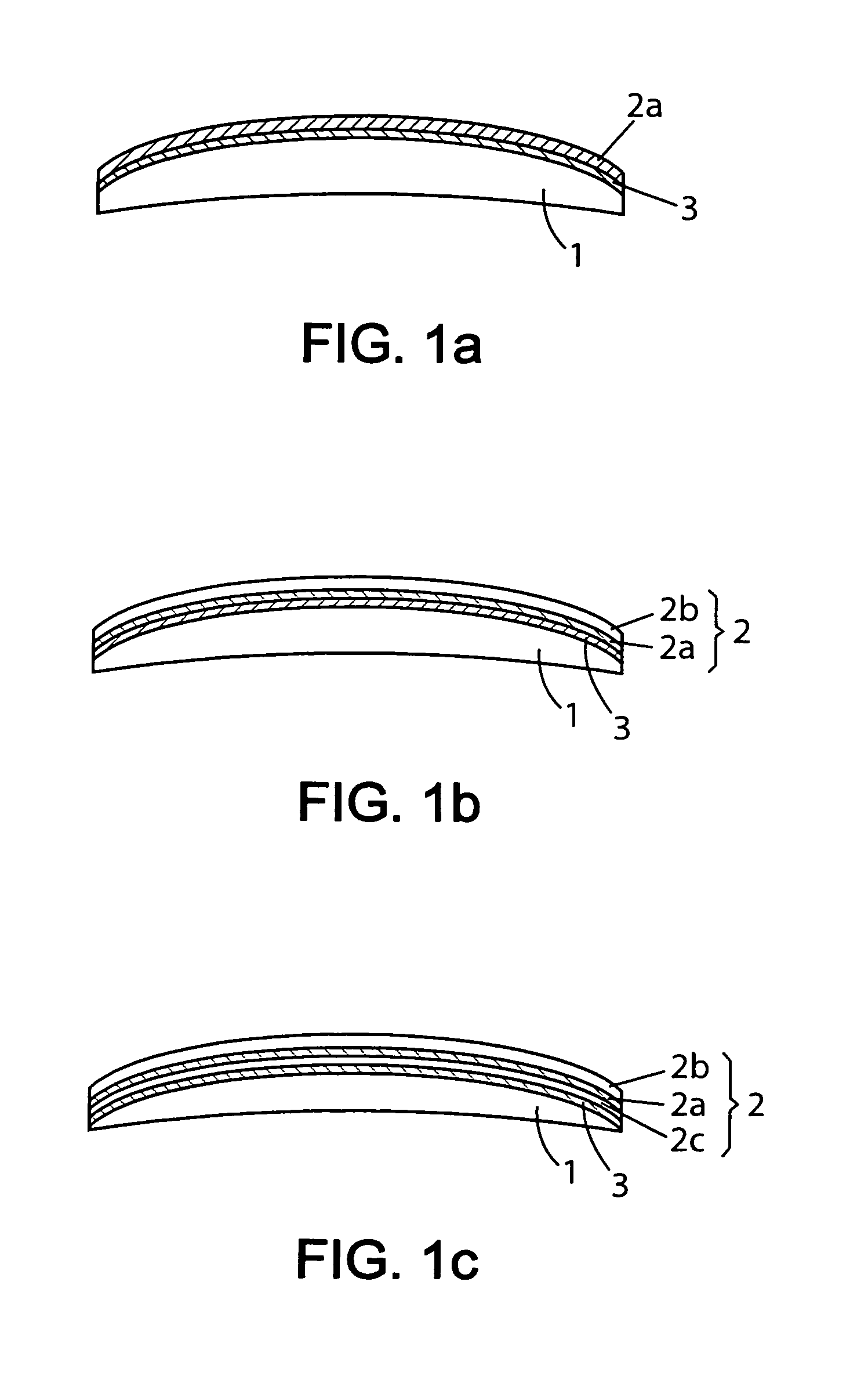Polarizing optical element comprising a polarizing film and method for manufacturing such element
a technology of polarizing film and optical element, which is applied in the field of polarizing optical element, can solve the problems of affecting the dimensional stability of the film, affecting the application, and affecting the position of the polarizing film, and achieves the effects of thin polarizing lens, easy implementation, and small thickness
- Summary
- Abstract
- Description
- Claims
- Application Information
AI Technical Summary
Benefits of technology
Problems solved by technology
Method used
Image
Examples
example 1
Production of a Polarizing Ophthalmic Lens of 1.665 Index and 6.75 Diopter Base
[0090] The base of a lens or of a curved film is defined as being the refractive power of a plano-convex lens having a refractive index of 1.53 and having the same curvature.
[0091] The polarizing layered structure 2 is an SHC-128UP polarizing film, of the cellulose triacetate / PVA / cellulose triacetate type, produced by Polatechno and having a total thickness of 213 microns.
[0092] This initially plane film is thermoformed and then cut into a circle in such a way that it forms part of a sphere having a curvature corresponding to 6.00 diopter base. The convex face of the film thus preformed is treated by a corona discharge.
[0093] A polythiourethane-based ophthalmic lens, of 1.665 refractive index and of 6.75 diopter base, undergoes a corona discharge treatment on its convex face.
[0094] The lens is then placed in the vacuum module of a device well known to those skilled in the art, normally used for apply...
example 2
Production of a Polarizing Ophthalmic Lens with a 1.67 Index of and a 4.0 Base
[0100] The polarizing layered structure 2 is a polarizing film of the cellulose triacetate / PVA / cellulose triacetate type produced by Nitto Denko, under the reference TEG1465DU, which includes a polyacrylate PSA layer about 20 microns in thickness. Since the polarizing layered structure 2 has a thickness of about 110 microns, the total thickness of the commercial film is about 130 microns. Two additional, flexible and removable, protective films are placed respectively on one side of the polarizing film and on the other.
[0101] This film is initially plane. After peeling off the removable protective film located on the side with the PSA layer 3, the film is fastened to a device similar to that shown in FIG. 2, comprising a low-pressure chamber 100 and an application system 110. More precisely, the film is fastened to a chamber 100 by means of a ring 102 in such a way that the PSA layer 3 is facing the conv...
PUM
| Property | Measurement | Unit |
|---|---|---|
| thickness | aaaaa | aaaaa |
| thickness | aaaaa | aaaaa |
| thickness | aaaaa | aaaaa |
Abstract
Description
Claims
Application Information
 Login to View More
Login to View More - R&D
- Intellectual Property
- Life Sciences
- Materials
- Tech Scout
- Unparalleled Data Quality
- Higher Quality Content
- 60% Fewer Hallucinations
Browse by: Latest US Patents, China's latest patents, Technical Efficacy Thesaurus, Application Domain, Technology Topic, Popular Technical Reports.
© 2025 PatSnap. All rights reserved.Legal|Privacy policy|Modern Slavery Act Transparency Statement|Sitemap|About US| Contact US: help@patsnap.com



